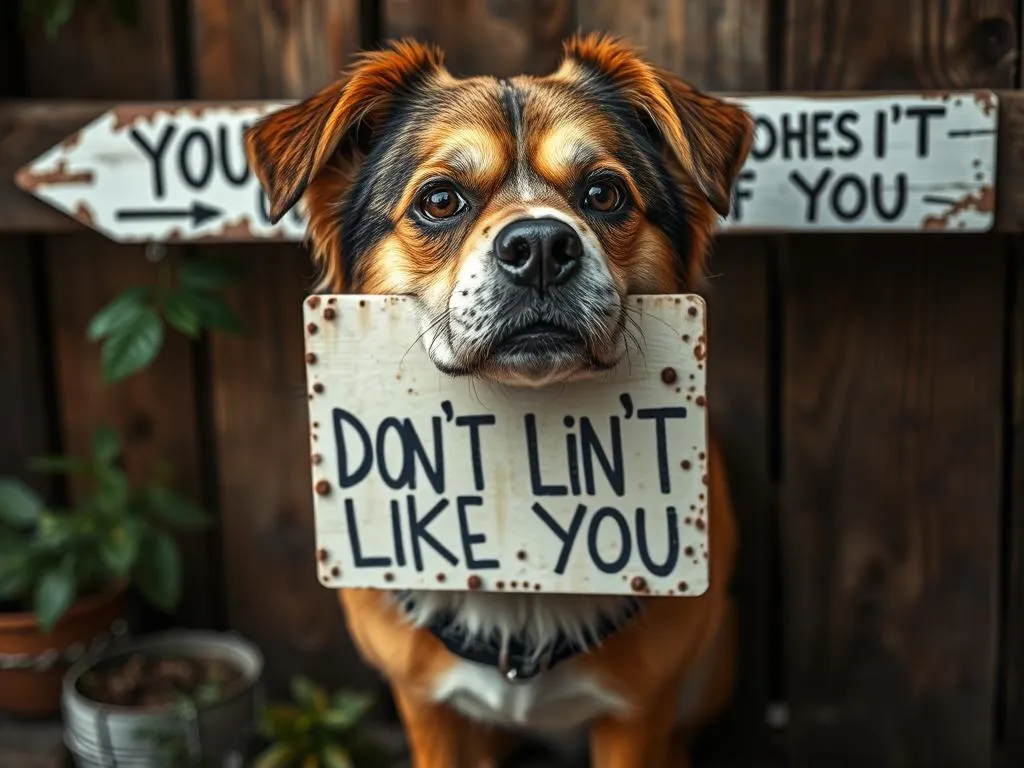
Understanding your dog’s behavior is crucial for building a strong bond and ensuring a happy life together. Dogs communicate through body language and vocalizations, and recognizing these signs can help you determine how your dog feels about you. If you’ve ever wondered about the signs your dog doesn’t like you, you’re not alone. Many pet owners may inadvertently overlook their dog’s subtle cues, leading to misunderstandings in the relationship.
Improving your bond with your dog starts with understanding these signs and addressing them through proper training and socialization. Here’s a comprehensive guide to help you decode your dog’s behavior and foster a more positive relationship.
Understanding Dog Behavior
The Importance of Canine Body Language
Dogs are masters of communication, often using body language to express their emotions. Unlike humans, dogs don’t vocalize their feelings in straightforward ways. Instead, they rely on a variety of physical cues. Recognizing these subtle signs can help you better understand your dog’s emotional state and needs.
For example, a wagging tail doesn’t always mean a dog is happy; it can also indicate anxiety or agitation. By learning to read these cues, you can respond appropriately and strengthen your bond.
Common Misconceptions About Dog Affection
Many people mistakenly believe that dogs express affection in the same way humans do. A common myth is that a dog always wants to cuddle or be close. In reality, dogs have their own unique ways of showing love, which can sometimes be misinterpreted. For instance, a dog might lean against you or bring you a toy as a sign of affection, but they might not enjoy being hugged or restrained.
Understanding the difference between canine affection and human affection is essential. Just because your dog doesn’t seek physical closeness doesn’t mean they don’t love you. Instead, they might prefer to show their affection in other ways.
Signs Your Dog Doesn’t Like You
Body Language Indicators
Avoidance Behavior
One of the clearest signs your dog doesn’t like you is avoidance behavior. If your dog frequently turns away from you, hides behind furniture, or backs away when you approach, these are strong indicators of discomfort or dislike. This behavior suggests that your dog feels insecure or threatened in your presence.
Tail Positioning
The position of your dog’s tail can be very telling. A low or tucked tail often indicates fear or discomfort. Conversely, a wagging tail can signify happiness, but it’s important to note the context. If your dog’s tail is between their legs and they seem tense, they may not be comfortable around you.
Vocalizations
Growling and Snapping
Growling and snapping are serious vocalizations that should not be ignored. These sounds often indicate that your dog feels threatened or defensive. If your dog growls when you approach them while they’re eating or playing with a toy, it’s a clear sign that they’re not comfortable with you being near.
Whining and Barking
Excessive whining or barking can also indicate that your dog is feeling anxious or unhappy. While occasional barking is normal, if your dog is constantly vocalizing, it may be their way of expressing discontent or a desire to escape a situation they find uncomfortable.
Lack of Interest in Interaction
Ignoring Commands
A dog that consistently ignores your commands may not respect you or feel a connection. This disobedience can be a sign of a strained relationship. Training is essential for establishing authority, and if your dog is not responding, it might mean they don’t feel a positive bond with you.
Avoiding Playtime
If your dog shows little enthusiasm for play, it could mean they are not enjoying your company. Dogs that don’t want to engage in play often feel disconnected or uninterested in interacting with their owners. This behavior can be a clear signal that your dog doesn’t like you or is simply uncomfortable.
Discomfort During Physical Contact
Rigid Body Posture
When a dog stiffens its body during physical contact, it can be a sign that they don’t want to be touched. A rigid posture indicates tension, which suggests that the dog may feel threatened or uncomfortable in the situation. If your dog reacts this way, it’s essential to respect their space.
Signs of Stress
Stress indicators in dogs include lip licking, yawning, and panting. If your dog exhibits these behaviors during your interactions, it may suggest that they are uncomfortable or anxious around you. Recognizing these signs can help you take the necessary steps to alleviate their stress.
Reasons Why Your Dog Might Not Like You
Lack of Proper Training
One of the primary reasons your dog may not feel a connection with you is a lack of proper training. Training helps establish boundaries, builds trust, and encourages positive interactions. Without consistent training, dogs can become confused about what is expected of them, leading to behavioral issues and a weakened bond.
Negative Experiences
Dogs that have had negative experiences with humans, whether from past traumas or harsh training methods, may carry these memories into new relationships. If your dog has been mistreated or improperly socialized, it may take time for them to trust you. Understanding their history can help you approach the situation with empathy.
Inconsistent Behavior from Owners
Inconsistency in commands or reactions can confuse dogs and lead to frustration. If you are inconsistent in how you interact with your dog—sometimes being playful and other times being stern—your dog may become uncertain about how to behave. This inconsistency can negatively impact their feelings toward you.
Improving Your Relationship with Your Dog
Building Trust Through Positive Reinforcement
Positive reinforcement is a highly effective training method that encourages good behavior through rewards. By rewarding your dog with treats, praise, or playtime for positive behavior, you help them associate you with good experiences. This approach fosters trust and strengthens your bond.
Engaging in Regular Training Sessions
Regular training sessions are essential for improving your relationship with your dog. These sessions not only teach your dog new skills but also provide an opportunity for positive interactions. Consistent training helps reinforce commands and builds respect, making it easier for your dog to feel connected to you.
Creating a Safe and Comfortable Environment
Your home environment plays a significant role in your dog’s well-being. Ensure that your dog has a safe, comfortable space where they can retreat if they feel overwhelmed. Providing a cozy bed, toys, and a quiet area can help your dog feel more secure and relaxed, ultimately improving their relationship with you.
When to Seek Professional Help
Identifying Serious Behavioral Issues
If your dog exhibits severe signs of dislike—such as constant growling, snapping, or extreme avoidance—it may be time to seek professional help. These behaviors could indicate deeper issues that require the expertise of a canine behaviorist or trainer.
Finding the Right Professional
When seeking professional help, look for a qualified dog trainer or behaviorist with experience in positive reinforcement techniques. Research their credentials, read reviews, and consider their approach to training. A good professional will prioritize your dog’s well-being and help you understand the root of your dog’s behavior.
Conclusion
Recognizing the signs your dog doesn’t like you is crucial for improving your relationship. Understanding your dog’s body language, vocalizations, and behavior can provide valuable insights into their feelings. By addressing these signs through proper training and creating a supportive environment, you can strengthen your bond and ensure a happier life for both you and your dog.
If you notice signs of dislike, take action to understand and remedy the situation. Remember, building a positive relationship with your dog takes time and patience, but the rewards are well worth the effort.









